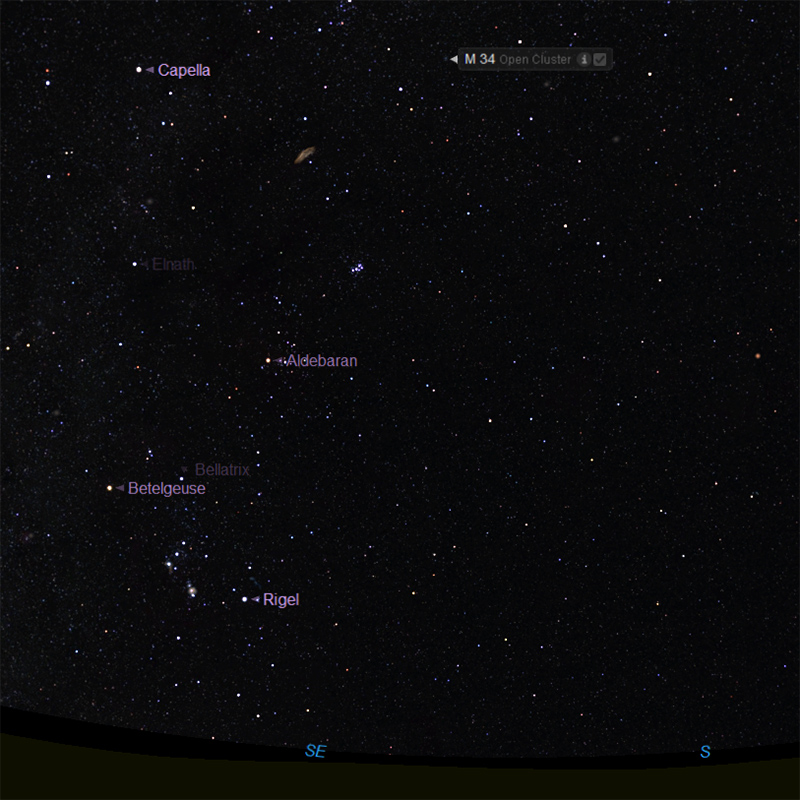M34

Credits: Keith Turnecliff, Long Itchington
The best way to view M34 is in telescopes at low magnifications.
Small telescopes will reveal up to 20 stars, while larger amateur telescopes show about 80 members, many of them arranged in pairs.
The best time of year to observe the cluster from northern latitudes is in the months of October, November and December.
Messier 34 (also known as NGC1039) is one of the nearest Messier objects to Earth.
There are only six other deep sky objects listed in Messier’s catalogue that are closer to us:
Pleiades (M45), the Beehive Cluster (M44), the Ptolemy Cluster (M7), the open cluster Messier 39, the Dumbbell Nebula (M27), and the Orion Nebula (M42).
Facts about M34 by Keith Turnecliff
Messier 34 (M34) is a bright, large open cluster located in the northern constellation Perseus.
The cluster lies at an approximate distance of 1,500 light years from Earth and has an apparent magnitude of 5.5. It has the designation NGC 1039 in the New General Catalogue.
Messier 34 is pretty easy to find in the sky and its stars can be resolved even in 10×50 binoculars.

Best viewed with resolution 6248 x 4176.
Credits: Image courtesy of Starry Night Pro Plus 8, researched and implemented by Keith Turnecliff.